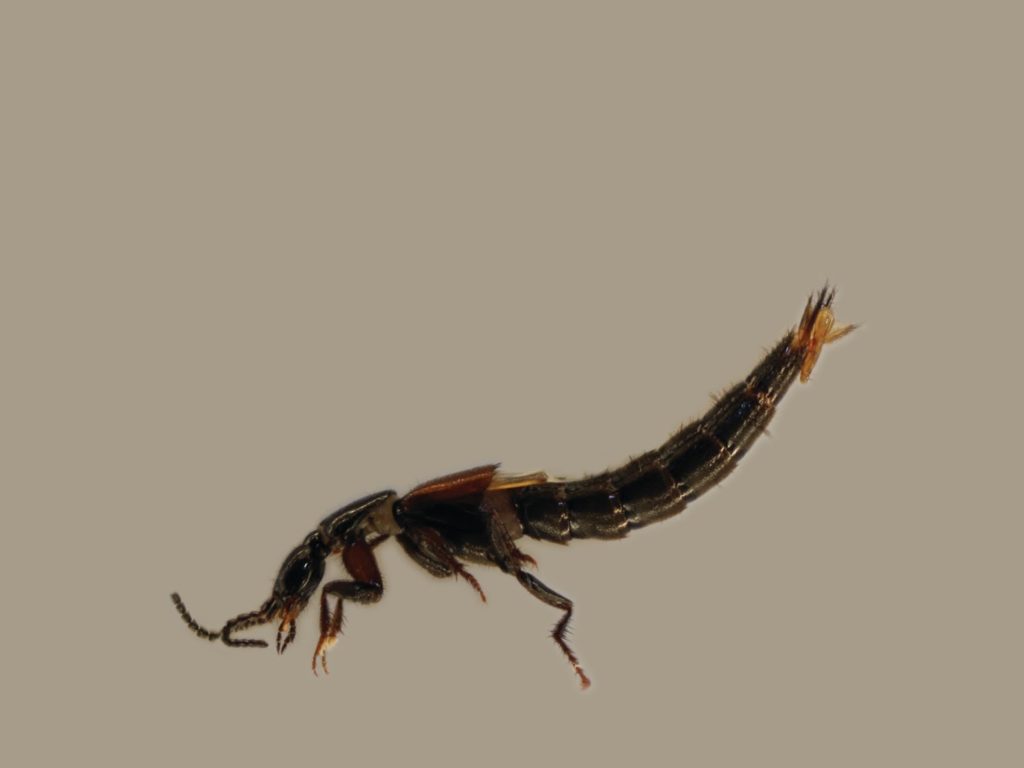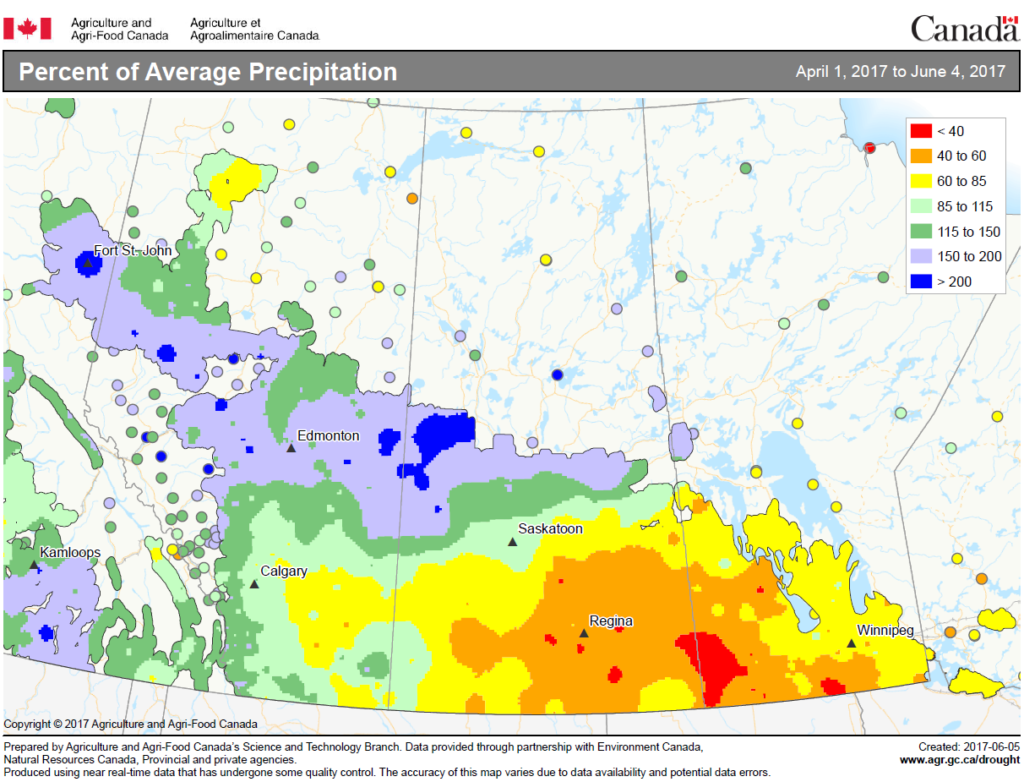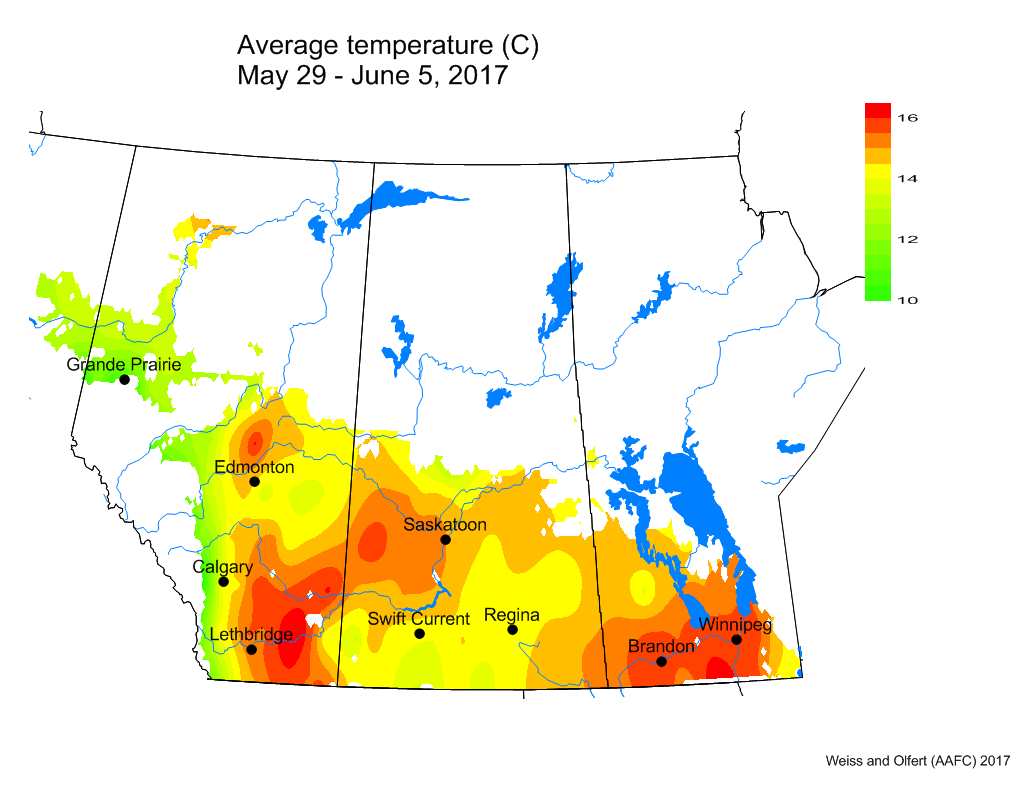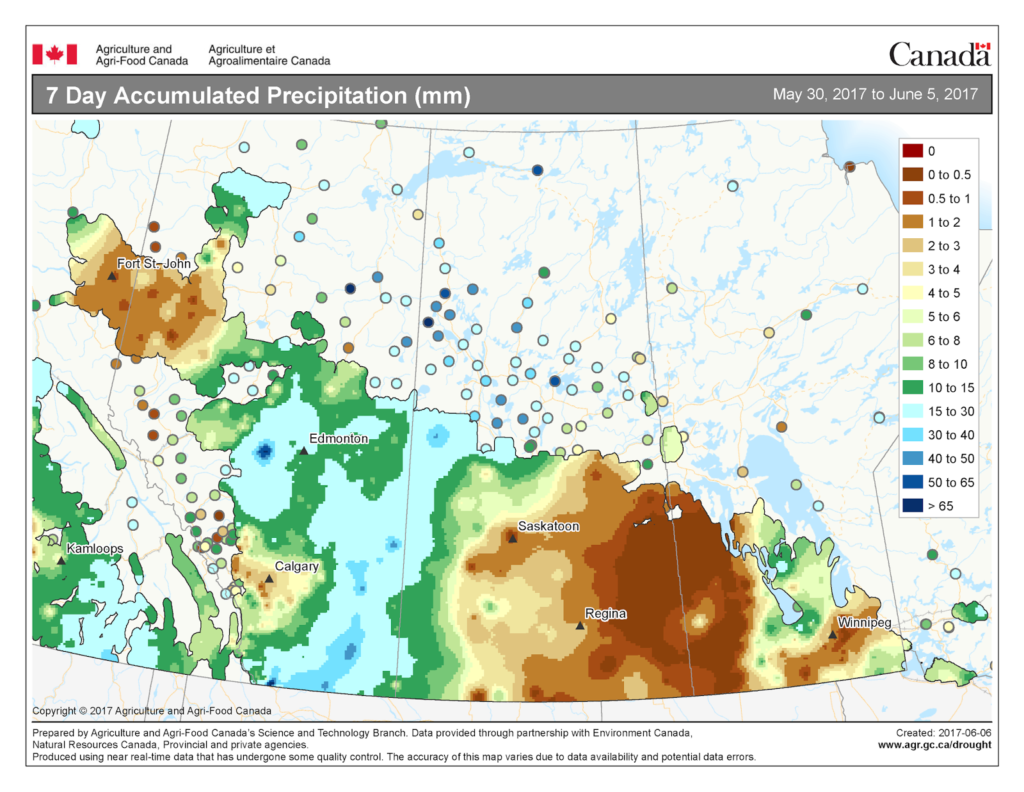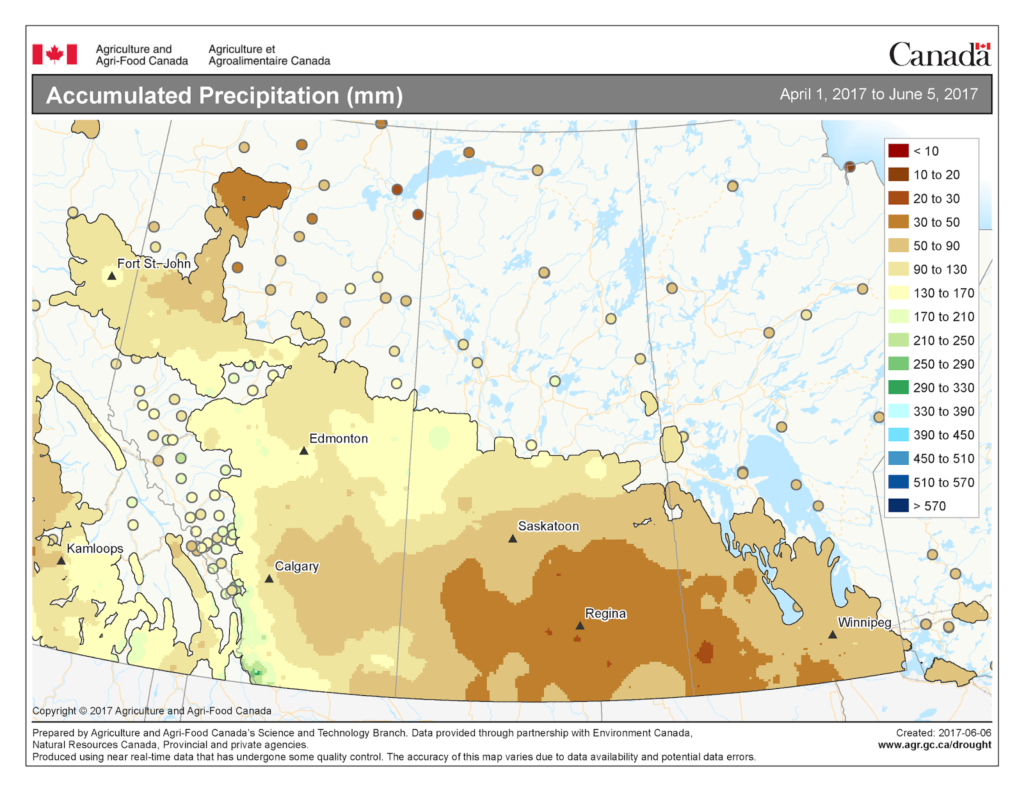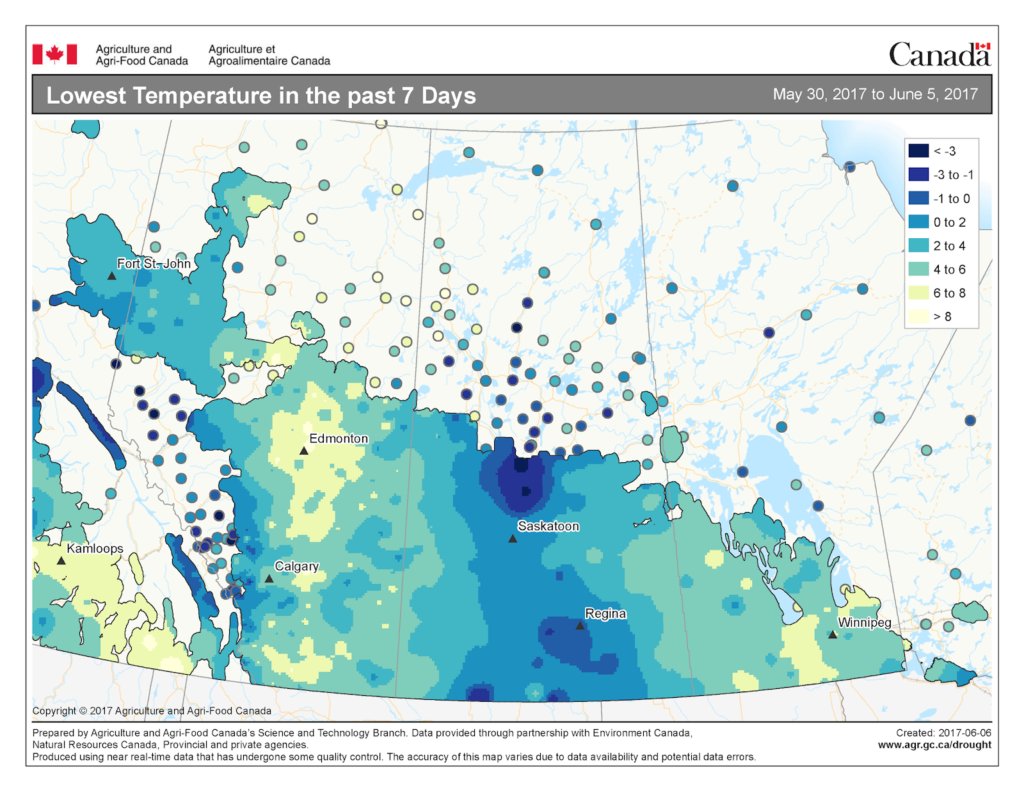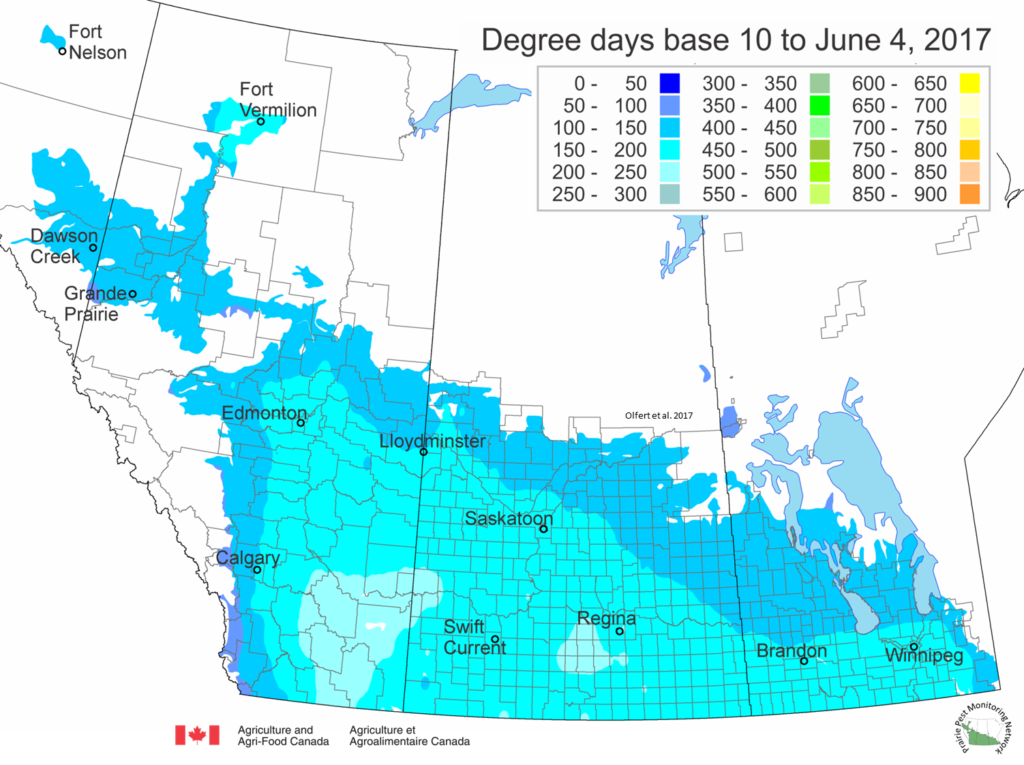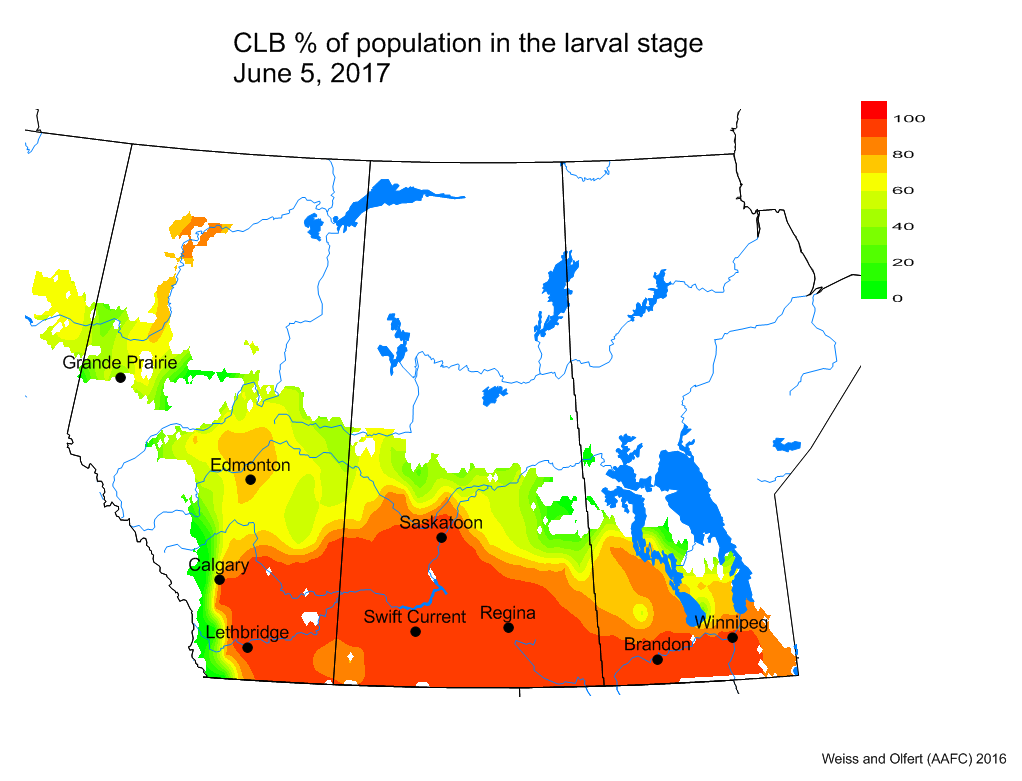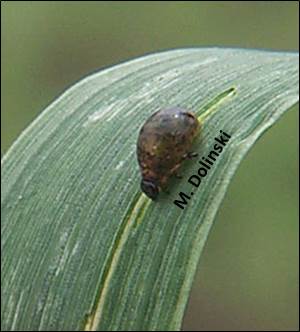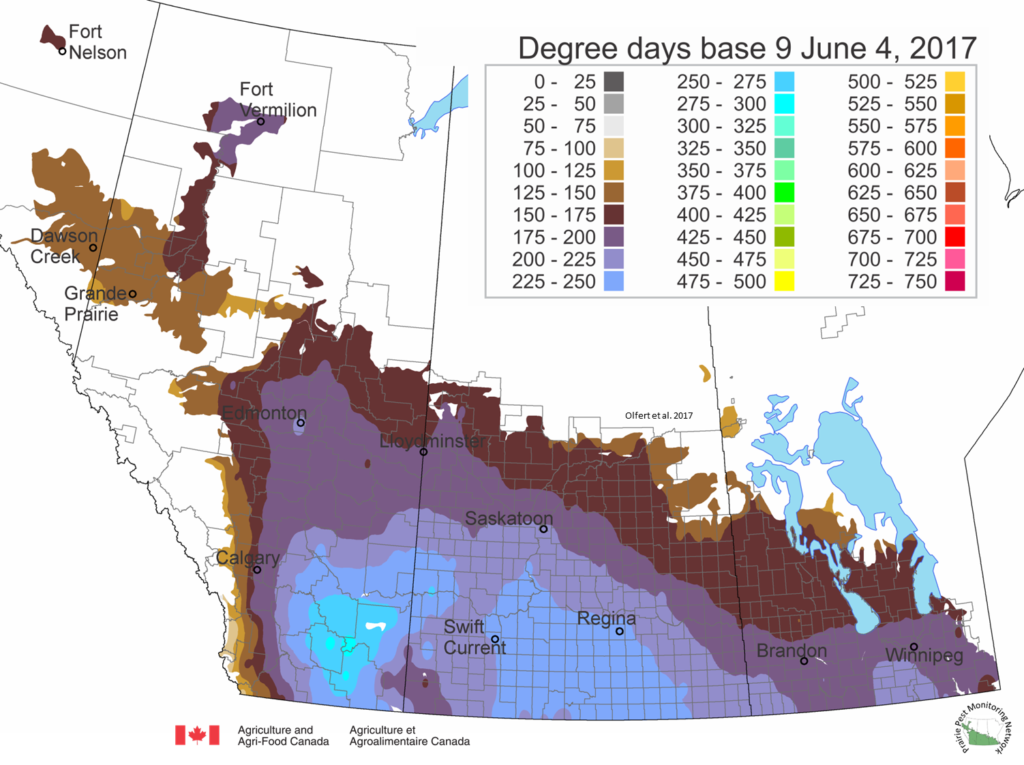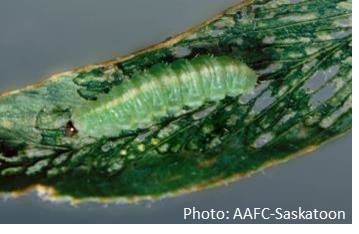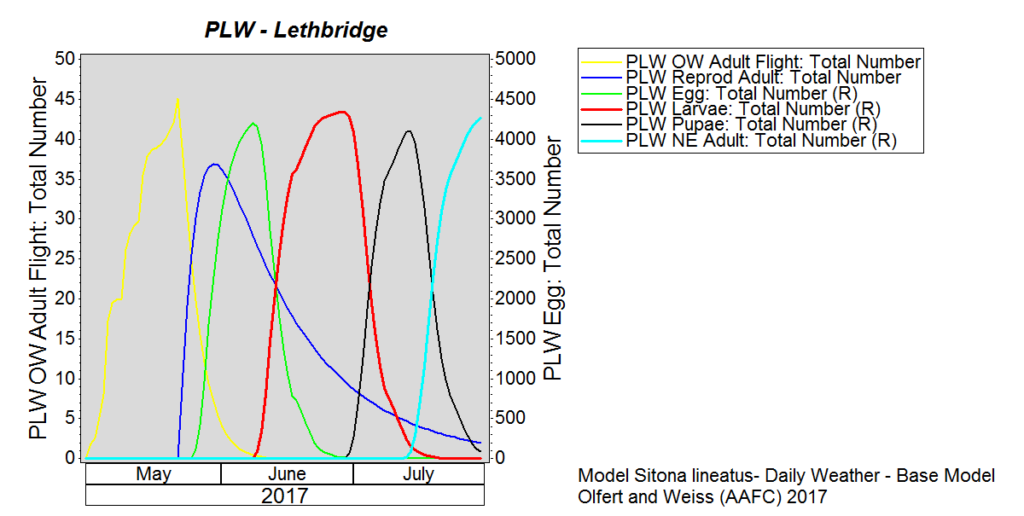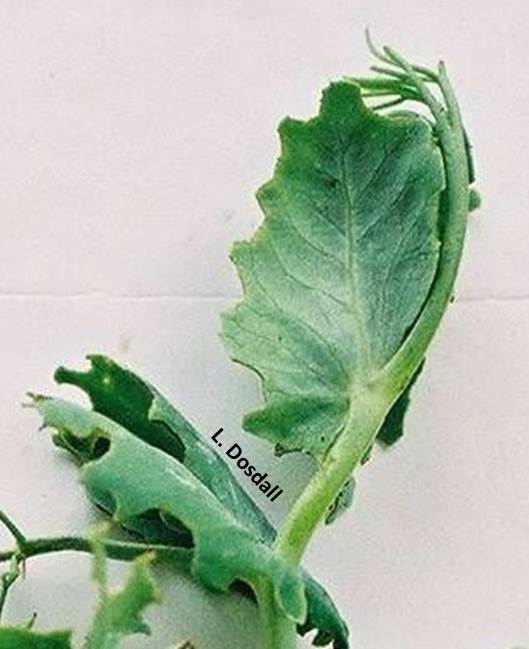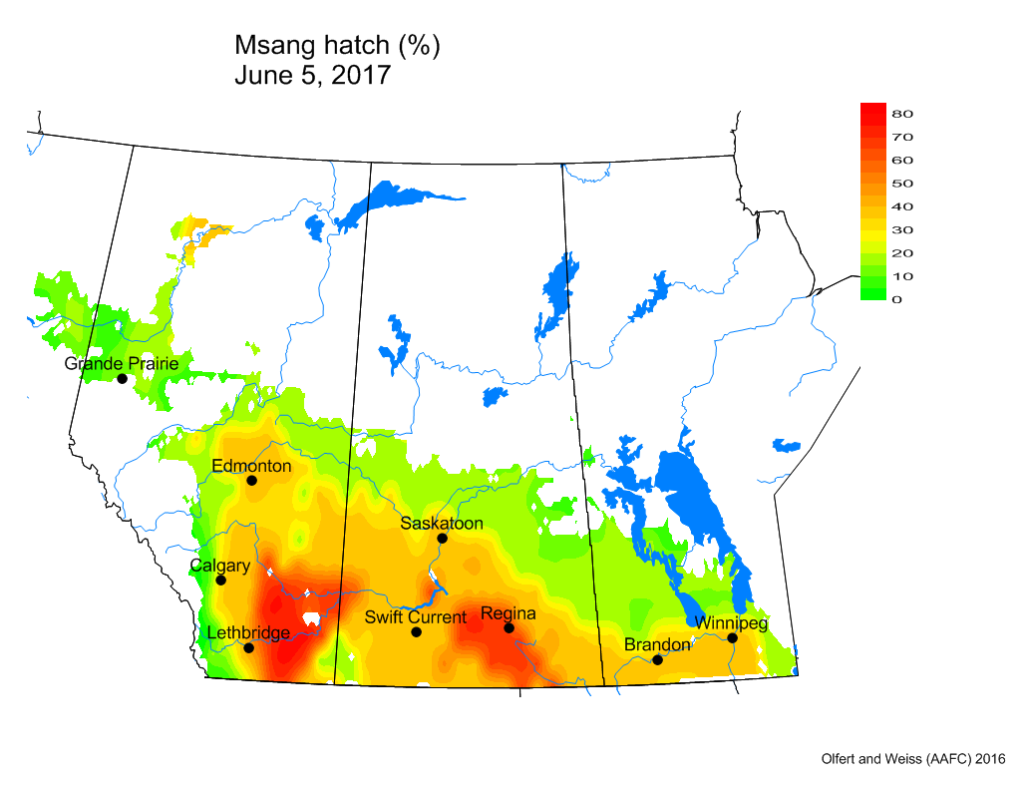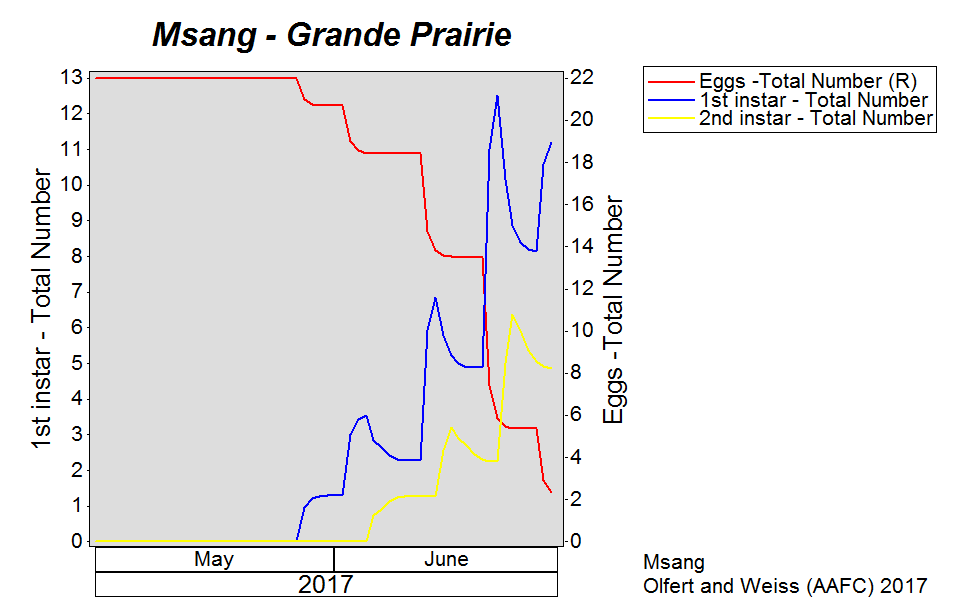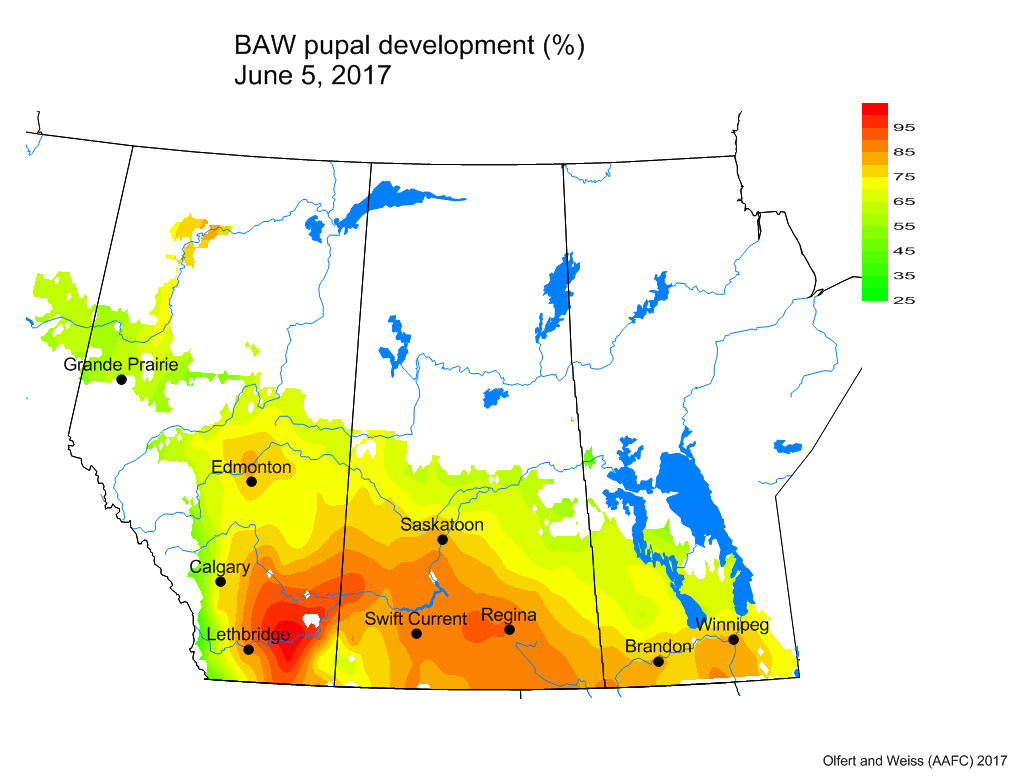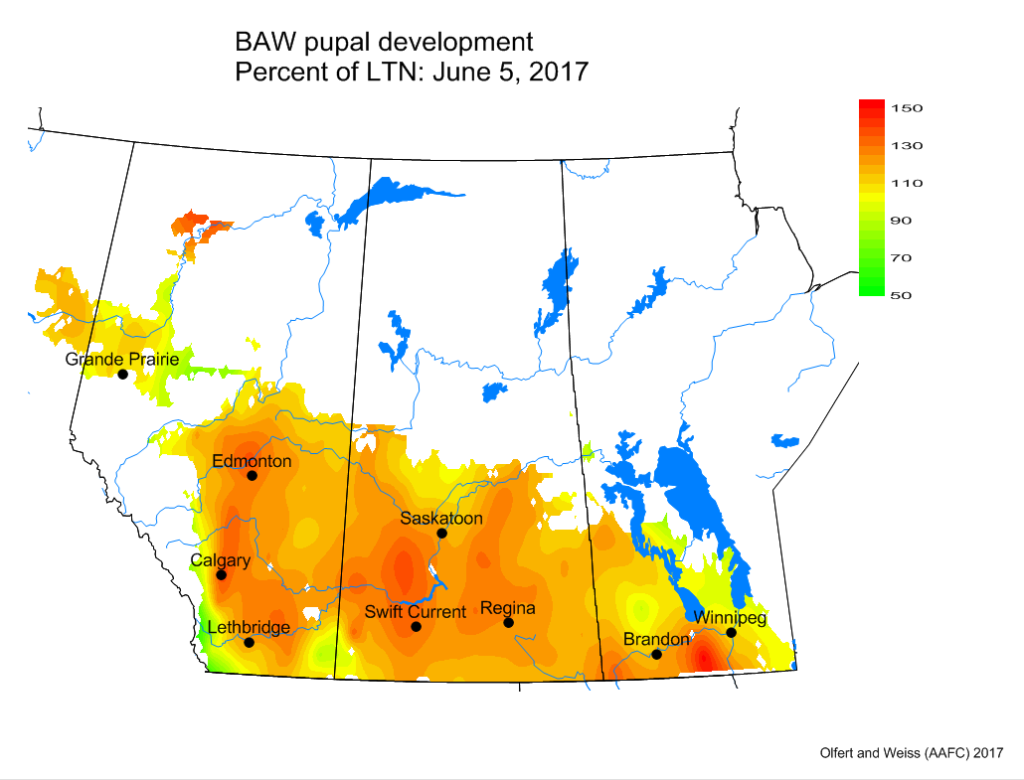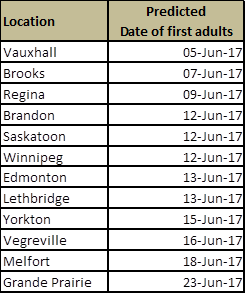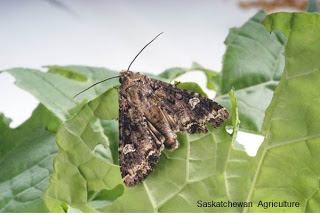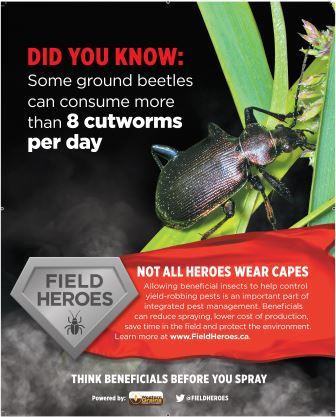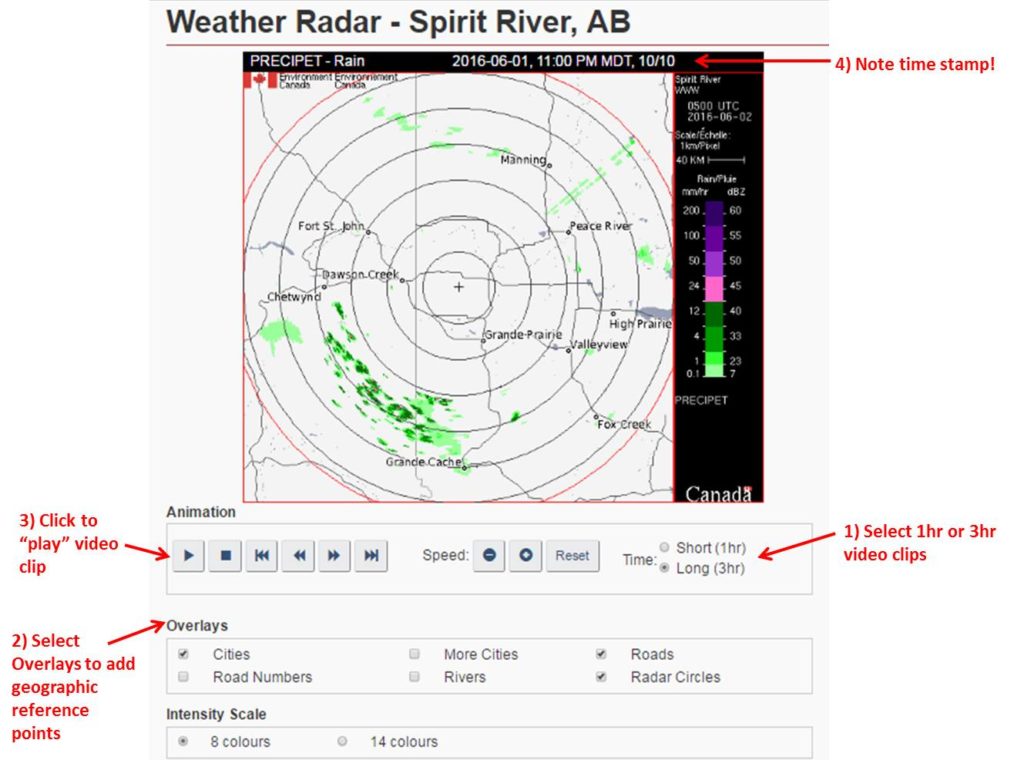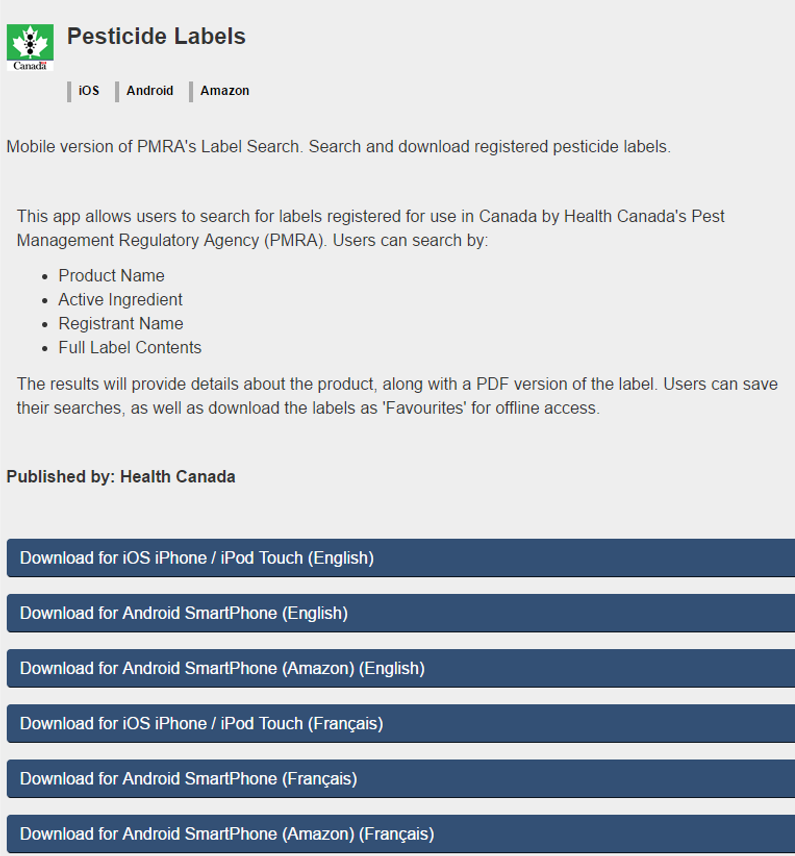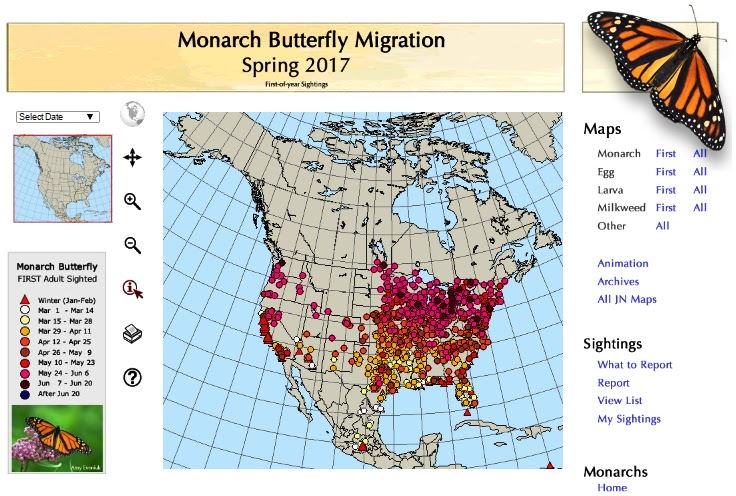Weather synopsis – Meteorological conditions for the past month of May were generally warmer and dryer than normal. Average May temperatures were in the range of 0 to 2°C warmer than long term averages.
May precipitation was below average across Manitoba and Saskatchewan; rainfall amounts were greatest across Alberta. The overall precipitation this growing season has been below normal to normal in Saskatchewan and Manitoba, but normal to well above normal in Alberta.
Over this past week, average temperatures across the prairies were 2°C warmer than last week, and marginally warmer than long term averages for early June. Weekly average temperatures were greatest in southern regions of Manitoba and Alberta. Precipitation over the past week was greatest in central and northern Alberta. Most of Saskatchewan was dry over the past week.
The map below reflects the Accumulated Precipitation for the Growing Season so far for the prairie provinces (i.e., April 1-June 5, 2017):
The map below shows the Lowest Temperatures the Past 7 Days (May 30-June 5, 2017) across the prairies:
Whereas the map below shows the Highest Temperatures the Past 7 Days (May 30-June 5, 2017):
The updated growing degree day map (GDD) (Base 5ºC, March 1 – June 4, 2017) is below:
While the growing degree day map (GDD) (Base 10ºC, March 1 – June 4, 2017) is below:
The maps above are all produced by Agriculture and Agri-Food Canada. Growers may wish to bookmark the AAFC Drought Watch Maps for the growing season.
